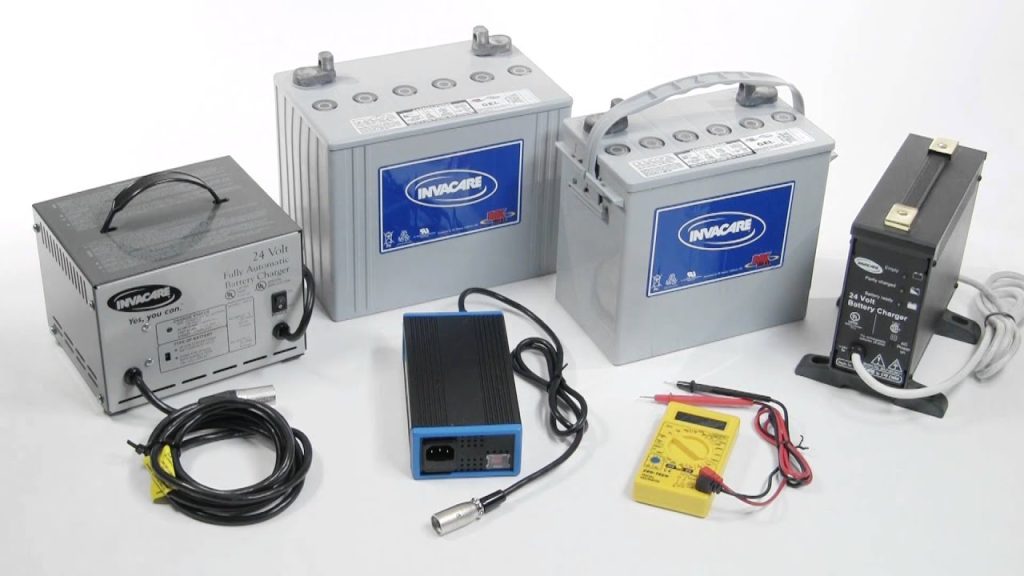Electric wheelchairs have revolutionized mobility for individuals with disabilities, offering freedom and independence like never before. These innovative devices rely on advanced battery technology to provide the necessary power for movement. In this article, we’ll explore the different electric wheelchair battery types available in the market, helping you make an informed decision when choosing the right power source for your needs.
- Lead-Acid Batteries:
Lead-acid batteries have been a staple in electric wheelchairs for decades. These batteries are known for their reliability and affordability. They come in two primary variations:
- Sealed Lead-Acid (SLA) Batteries: SLA batteries are maintenance-free and sealed to prevent leakage, making them a safe choice. However, they are relatively heavy, which can affect the overall weight of the wheelchair.
- Flooded Lead-Acid Batteries: These batteries require periodic maintenance to check fluid levels and prevent leakage. They are less expensive than SLA batteries but may be less convenient due to the maintenance requirement.
Lead-acid batteries are known for their durability and ability to provide consistent power, but their weight can be a drawback for some users.
- Gel Batteries:
Gel batteries are a type of sealed lead-acid battery but with a key difference: the electrolyte is in gel form, rather than liquid. This design minimizes the risk of leakage and allows for installation in various orientations, including sideways or upside down.
Gel batteries are known for their slow discharge rate and ability to provide stable power for extended periods. They are a suitable choice for users who require a reliable and maintenance-free battery for their electric wheelchair.
- AGM (Absorbent Glass Mat) Batteries:
AGM batteries are another variation of sealed lead-acid batteries. They are designed with a fiberglass mat between the battery’s plates, which absorbs the electrolyte. This design enhances both safety and performance. AGM batteries offer several advantages:
- Maintenance-Free: Like gel batteries, AGM batteries are maintenance-free and do not require fluid level checks.
- Lightweight: They are lighter than traditional flooded lead-acid batteries, making them a popular choice for lightweight and portable electric wheelchairs.
- Fast Recharge: AGM batteries can be recharged quickly, providing more flexibility and convenience to users.
- Lithium-Ion Batteries:
Lithium-ion batteries represent the latest advancements in electric wheelchair power sources. These batteries are known for their high energy density, lightweight design, and long cycle life. Here are some key benefits of lithium-ion batteries:
- High Energy Density: Lithium-ion batteries offer a high energy-to-weight ratio, providing more power while keeping the wheelchair’s weight manageable.
- Long Cycle Life: They can withstand a significantly higher number of charge-discharge cycles compared to lead-acid batteries, resulting in longer-lasting performance.
- Fast Charging: Lithium-ion batteries can be charged quickly, reducing downtime for users.
- Compact Size: They are more compact than lead-acid batteries, making them ideal for users who need a sleek and modern wheelchair design.
Choosing the Right Battery Type:
Selecting the right battery type for your electric wheelchair depends on your specific needs and priorities:
- Budget: Lead-acid batteries, particularly flooded variants, are cost-effective choices.
- Maintenance: If you prefer a maintenance-free option, consider sealed lead-acid, gel, or AGM batteries.
- Portability: For lightweight and portable wheelchairs, lithium-ion batteries are the best choice.
- Longevity: Lithium-ion batteries offer the longest lifespan and can be a cost-effective option in the long run.
- Usage Patterns: Consider your daily usage, including the distance you plan to travel and the terrain you’ll encounter.
In conclusion, understanding the various electric wheelchair battery types is crucial in making an informed decision. Each type has its advantages and limitations, so it’s essential to evaluate your specific requirements and consult with experts to choose the battery type that best suits your needs, providing you with reliable and efficient power for your electric wheelchair. Whether you prioritize affordability, maintenance, portability, or longevity, there’s a battery type that’s perfect for you.

